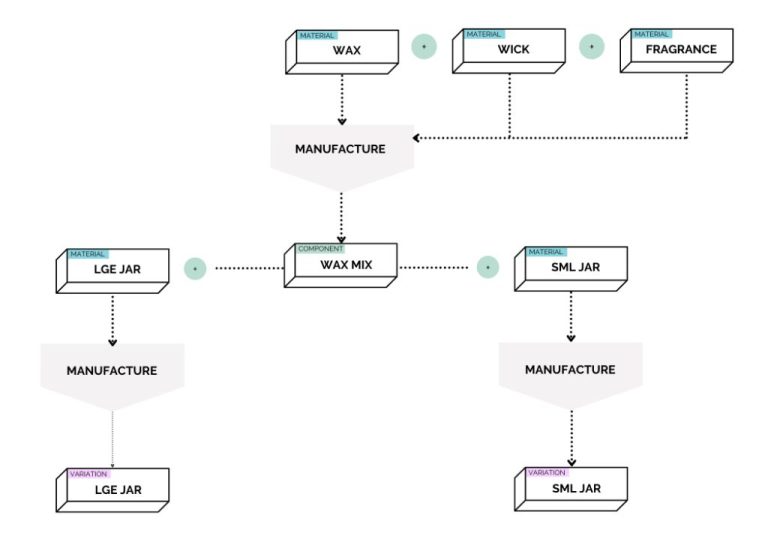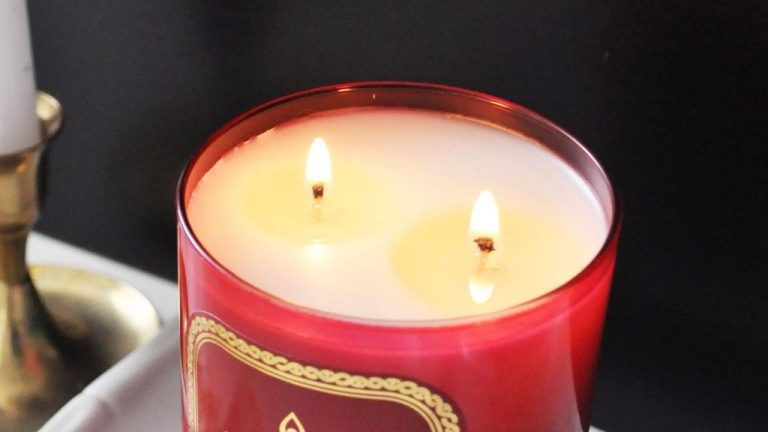Are Coconut Candles Good For You?
Coconut candles are made from coconut wax, which is derived from the meat of the coconut fruit. Coconuts have been used for centuries in tropical regions for food, oil, and other purposes. Coconut oil was likely first used for candles and lamp oil in areas where coconuts were abundant. The earliest recorded use of coconut oil for candles dates back to 1800s India. Coconut wax candles were later popularized in the 1990s as a natural alternative to paraffin wax candles.
Compared to other candle waxes like paraffin and soy, coconut wax is reputed to have several health and environmental benefits. It is often marketed as a “clean burning” wax that does not emit as much smoke. Some claim that coconut candles release negative ions and essential oils into the air when burned, purifying the air. However, there is limited scientific evidence to support these health claims. Nonetheless, many appreciate coconut candles for their pleasant tropical aroma and eco-friendly image.
Sources: https://www.sensualcandle.co/blogs/sensual-stories/coconut-wax-candles-benefits, https://shayandcompany.com/product/coconut-1-candle-wax-100-pure-coconut/
How Coconut Candles Are Made
Coconut candles are made from coconut wax along with essential oils and wicks. The main ingredient that sets them apart from other candle types is the use of coconut wax, which comes from coconuts.
To make coconut wax, the oil is extracted from the meat of the coconut. The oil then undergoes hydrogenation, which converts it into a solid wax. This coconut wax is the base ingredient used to make coconut candles.
The manufacturing process involves first melting the coconut wax. Essential oils are then added for fragrance, along with dye if desired for color. The wax is poured into containers or molds and allowed to cool before inserting the wicks.
Compared to other wax types, coconut wax has a lower melting point and produces less smoke when burning. It’s praised for its smooth texture and excellent scent throw. The natural ingredients make it an appealing option for those seeking eco-friendly candles. With just coconut wax, essential oils, and a wick, homemade coconut candles can easily be crafted.
Source: https://nikura.com/blogs/make-at-home/how-to-make-coconut-candles
Pros of Coconut Candles
Coconut candles offer several benefits over traditional wax candles. The main advantages are:
Coconut wax is made from natural ingredients like coconut oil, palm oil, and soy wax. This makes coconut candles non-toxic and free from harmful chemicals (https://www.fosseliving.co.uk/blogs/news/7-benefits-of-coconut-wax-in-candles).
The tropical aroma from coconut oil gives the candles a pleasant fragrance reminiscent of the tropics. Coconut wax has excellent scent throw and retention capabilities, allowing more fragrance to fill the air (https://www.virginutty.co.uk/blog/coconut-oil-wax-candles-benefits).
Coconut wax burns slowly and cleanly without producing smoke or soot like paraffin candles. This makes coconut candles safer and healthier for indoor use.
Cons of Coconut Candles
Though coconut candles have many benefits, they do have some drawbacks to consider as well. Coconut wax candles still produce smoke when burned, which can be problematic for some people. According to Suffolk Candles, “Although the smoke produced from a coconut candle doesn’t contain toxins, the smoke particles themselves can still cause respiratory irritation in some people” (source). Those with asthma or breathing sensitivities may want to be cautious with any type of scented candle, including coconut.
People with coconut allergies may also want to avoid coconut candles, as they could trigger allergy symptoms. The proteins in coconut could become airborne when the candle is burned. Those with known coconut allergies should opt for candles made from beeswax or other non-coconut waxes.
Finally, coconut wax candles tend to be more expensive than traditional paraffin wax candles. As noted by The Filtery, “Coconut wax costs more than paraffin wax, so coconut wax candles are generally priced higher than regular candles” (source). The higher cost is due to the price of raw coconut oil and the processing methods. For some budgets, this may be a drawback to consider.
Aroma Therapeutic Benefits
One of the main benefits of coconut candles is their ability to provide aroma therapeutic effects through essential oil diffusion. The essential oils infused in coconut wax candles can have positive impacts on stress relief, mood enhancement, and skin health.
Studies show that inhaling essential oils like lavender, chamomile, and ylang ylang can reduce anxiety and emotional stress. The fragrances trigger receptors in the brain that promote relaxation. Coconut candles allow for steady diffusion of these calming scents.
Similarly, essential oil aromas from a coconut candle can lift mood and energy levels. Citrus oils like grapefruit, orange, and lemon have been found to reduce depression and irritability. Florals like jasmine and rose boost positive emotions.

Since coconut wax fully absorbs essential oils, lighting a candle enables efficient topical delivery of the oils’ skin benefits. The moisturizing effects of oils like jojoba, avocado, and vitamin E can be passively absorbed as the candle burns. This occurs without needing direct skin contact.
Smoke and Air Quality
Compared to paraffin candles, coconut candles produce significantly less soot when burning. This makes them a better choice for indoor use. Paraffin candles generate more black carbon soot particles that can stain walls, furniture, and fabrics. The natural materials in coconut candles create less of this problematic residue.
However, coconut candles do still produce smoke and release emissions like any other candle. The main byproducts are carbon dioxide and fine particulate matter. These particles can irritate lungs and worsen respiratory issues like asthma. Burning a coconut candle produces air pollutants, just at lower levels than paraffin. Proper ventilation is still recommended. Those sensitive to smoke should use coconut candles cautiously or avoid entirely.
In summary, coconut candles generate less soot than standard paraffin candles. But they still produce concerning CO2 emissions and fine particulate matter when burnt. Proper ventilation and limited usage is best.
Safety Concerns
One of the main safety concerns with coconut candles is the fire hazard they can pose if not used properly. According to Coconut Candle Safety Precautions, you should never burn a coconut candle near anything flammable like furniture, bedding, or carpets. The coconut shell can get very hot and could ignite these items if placed too close. Proper placement on a heat-resistant surface at least 12 inches from flammables is crucial.
Maintaining the wick is also an important safety step, as an overly long wick can cause larger flames and dripping wax. Candle safety and burning instructions recommends trimming the wick to 1⁄4 inch before lighting and trimming again if the flame gets too high. This helps prevent excess smoke and promotes even burning. Always blow out candles before leaving a room or going to sleep.
With precautions like keeping coconut candles away from flammables and trimming the wick regularly, coconut candles can be used safely. But supervision is still advised, according to Coconut Candles FAQ, as with any open flame.
Environmental Impact
One of the biggest benefits of coconut candles is that they are biodegradable. The wax and other natural ingredients break down easily without leaving behind toxic chemicals or plastic waste. This makes coconut candles far more eco-friendly than many standard paraffin or soy candles.
Coconut farming can also be an environmentally sustainable industry when proper practices are followed. Choosing candles made from coconuts harvested in a responsible way from well-managed farms ensures the raw materials are renewable and not damaging rainforests or habitats.
Overall, coconut candles have less of an environmental footprint compared to other candle options. The biodegradable nature and potential for sustainable harvesting methods are important factors for eco-conscious consumers to consider.
Cost Analysis of Coconut Candles
When evaluating the costs of coconut candles, here are some key factors to consider:
Price Per Candle
Coconut candles are generally more expensive than standard paraffin wax candles. The average price for a coconut candle is $10-$20 for a 6-8 oz candle. Larger coconut candles may cost $25 or more. This contrasts with basic paraffin candles which can often be purchased for $1-5 for a comparable size.
Burn Time
However, coconut candles tend to have a longer burn time – usually 45-60 hours for a 6-8 oz candle. Paraffin candles often provide just half that burn time. So while the upfront cost is higher, coconut candles may provide a better value in the long run.
Cost Comparison to Alternatives
Coconut candles have a higher price point than basic paraffin, but are competitively priced with other natural wax candles like soy and beeswax. Coconut wax is generally cheaper than beeswax, so coconut candles may be $5-10 less per candle compared to 100% beeswax.
Overall, coconut candles are one of the more affordable natural candle options. Their extended burn time helps offset their higher initial cost over time. So for buyers interested in natural, non-toxic candles, they offer a decent value.
Conclusion
In summary, coconut candles have several pros and cons to consider.
On the pro side, coconut candles often have pleasant natural scents, are environmentally friendly if sustainably sourced, and can provide aromatherapeutic benefits. The natural wax burns cleanly and emits less soot and smoke than paraffin candles. Coconut candles are also biodegradable and made from a renewable resource.
On the con side, some people find the smell of coconut overpowering or unrealistic in candles. There are also safety concerns, as coconut wax has a lower melting point than other waxes and can produce more soot. Poorly made coconut candles may tunnel or have other burning issues. Coconut wax is also more expensive than paraffin.
To safely use coconut candles, keep them away from drafty areas, trim wicks to 1⁄4 inch before each use, and avoid burning for more than 4 hours at a time. Never leave a burning candle unattended. Make sure jars are heat-safe and place candles on an appropriate nonflammable surface. Consider using a candle warmer instead of burning, to avoid issues with soot. Test new candles for tunneling and improper burning before use.
With proper safety precautions, coconut candles can be an enjoyable natural alternative to conventional candles. But be sure to weigh all factors before deciding if coconut candles are right for your needs.





